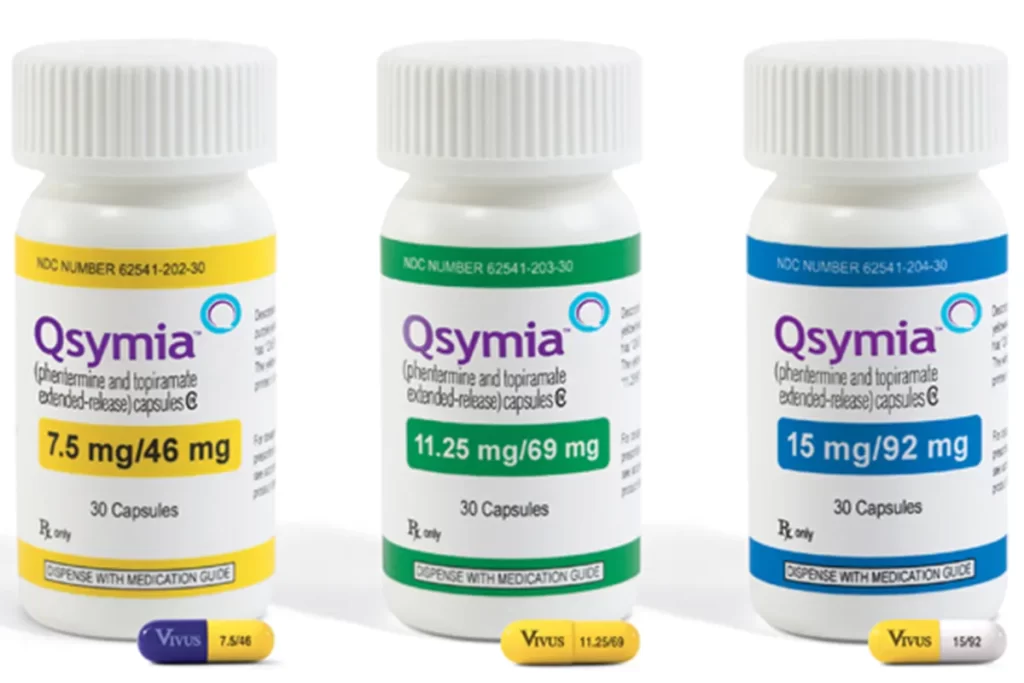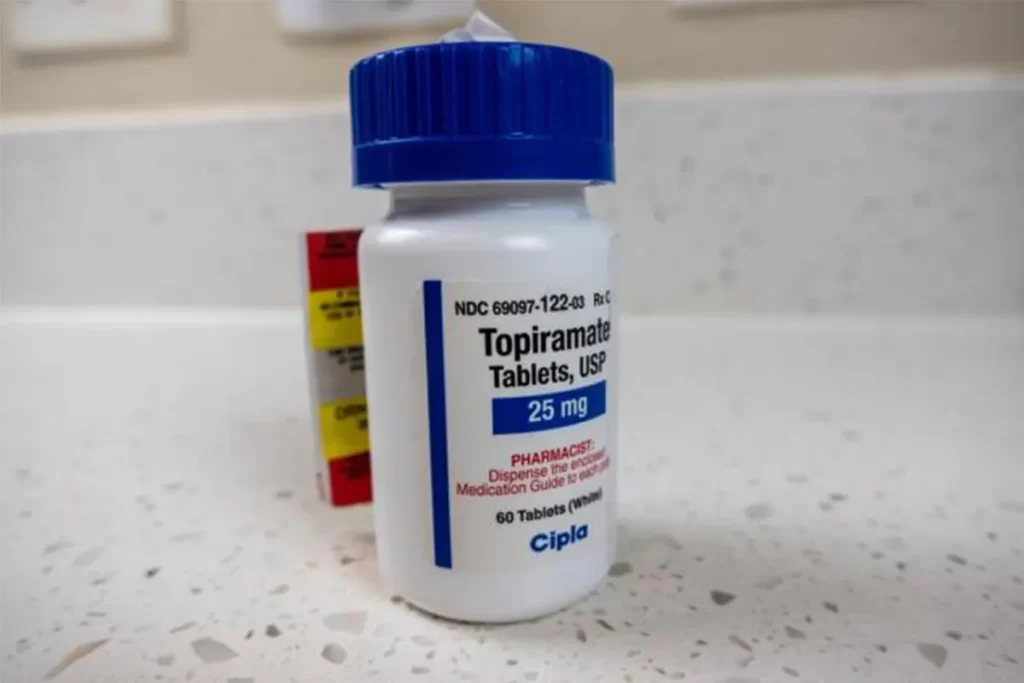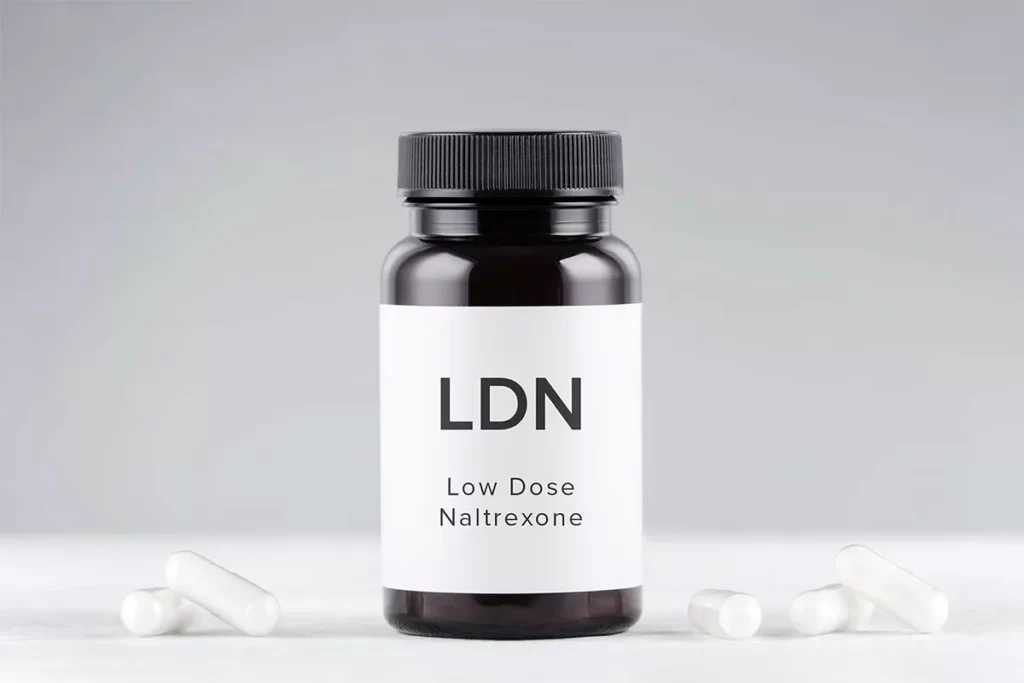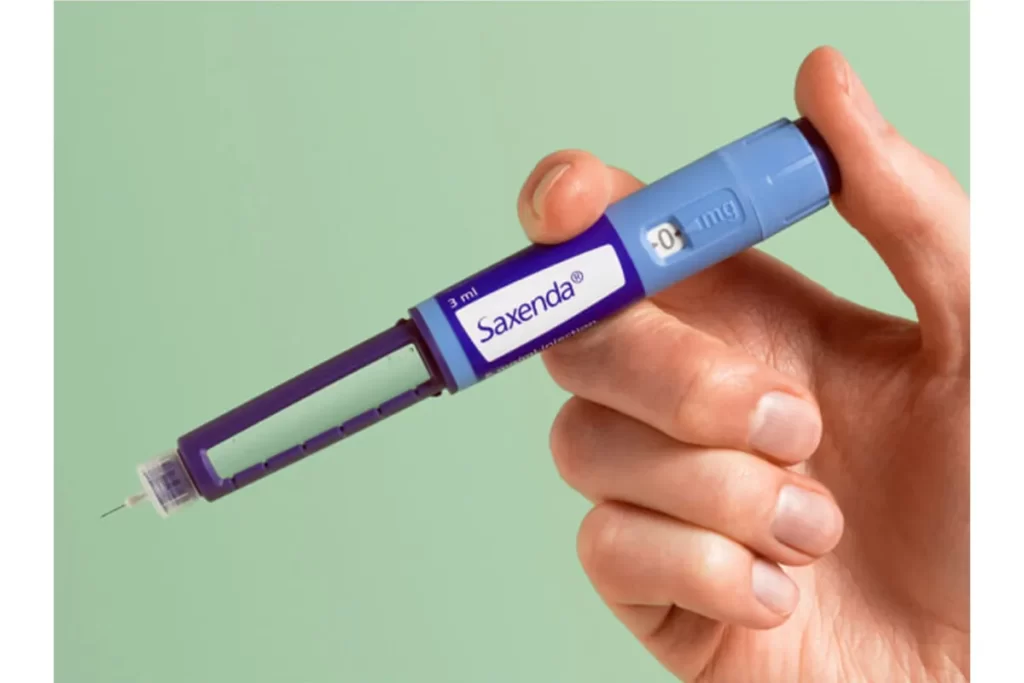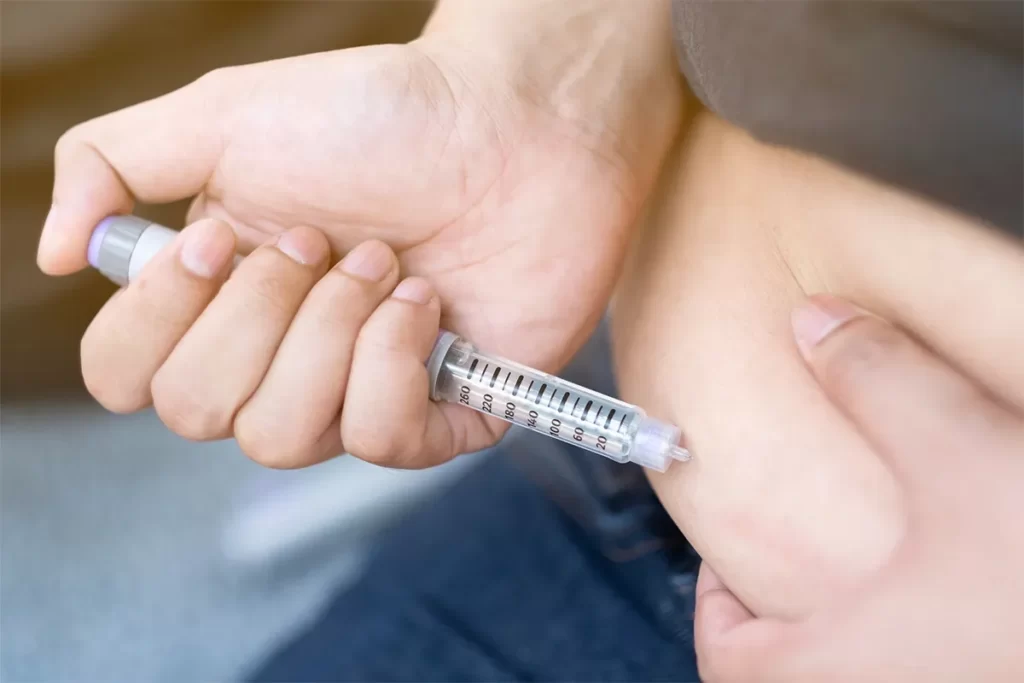Can You Calorie Deficit Muscle Gain? A Dietitian & Expert's Input
-
 Written by
Michael J. Ormsbee
Written by
Michael J. Ormsbee
- LAST UPDATED September 20, 2023
Most fitness enthusiasts know that building muscle requires being in a caloric surplus to fuel muscle growth. However, an interesting question arises – can you actually gain muscle mass while in a calorie deficit intended for fat loss? The concept of achieving simultaneous fat loss and muscle gain, known as body recomposition, intrigues many people aiming to get ripped abs and toned muscles. In this comprehensive guide, we’ll explore the science and practice behind attempting calorie deficit muscle gain. You’ll learn if it’s truly possible or not, which factors matter most, optimal strategies to support muscle retention and growth while dieting, expected rates of progress, and more. If you want to know the real scoop on gaining strength and size while losing fat, this guide covers everything you need to know.
What is a Calorie Deficit?
Before examining the intricacies of calorie deficit muscle gain, it helps to define some key terms and concepts. First and foremost – what exactly is a calorie deficit?
A calorie deficit refers to a state where your daily calorie expenditure exceeds your calorie intake from foods, beverages, and supplements. This creates a “negative energy balance” where the body must pull from stored energy (fat) to make up the difference. Over time, running a consistent calorie deficit leads to weight loss and reduced body fat.
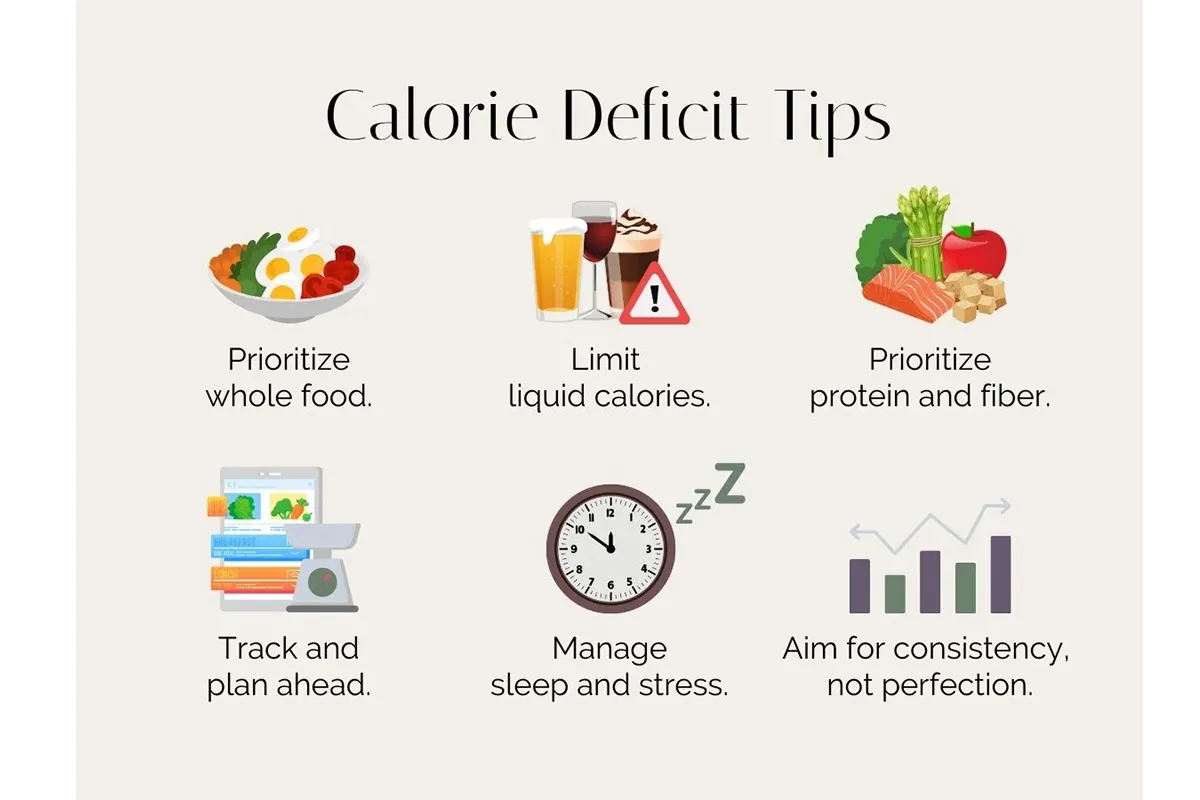
Your total daily energy expenditure consists of three main components:
- Basal Metabolic Rate (BMR): The calories your body burns just to perform basic physiological functions like breathing, heartbeat, brain activity, and maintaining cellular function. BMR makes up the majority of total expenditure.
- Thermic Effect of Food (TEF): The energy cost of digesting, absorbing, and processing the foods and drinks you consume. Protein has the highest TEF.
- Activity Thermogenesis: The calories you burn through all physical movement and exercise.
Your total daily calorie intake is simply the sum of calories from the foods, beverages, and supplements you consume each day.
To calculate calorie balance:
Daily Calorie Expenditure – Daily Calorie Intake = Calorie Balance
If expenditure exceeds intake, you have a deficit. If intake exceeds expenditure, you have a surplus.
A deficit of 500 calories daily equates to 1 pound per week of weight loss. A 250-calorie daily deficit leads to about 0.5 pound loss weekly. The bigger the sustained deficit, the faster the loss. However, overly aggressive deficits can backfire.
The caloric intake needed to maintain body weight is called your “maintenance level”. If intake matches expenditure, your weight stays stable. So determining your personalized deficit target requires first figuring out your maintenance calories. Tracking intake and weight over time gives you an approximation. Online calculators can provide starting estimates as well.
Achieving a calorie deficit requires either:
1) Reducing calories/food intake
2) Increasing calorie burn via more activity
Most people utilize both approaches concurrently. For example, reducing intake by 250 calories per day while also adding 250 calories of extra exercise. This creates a 500-calorie total deficit without extremes.
Over time, the weight/fat loss from the calorie deficit may lower your maintenance level slightly. So the plan must be adjusted periodically to sustain the desired pace of loss. But in general, a calorie deficit achieved through moderate diet and activity adjustments provides a safe, consistent path to losing body fat.
Understanding Calorie Deficit Muscle Gain: How Muscles Grow
Now that we understand calorie deficits, let’s discuss how muscle growth occurs and why a calorie surplus is typically required to support it.
In order to get bigger muscles, you need to stimulate muscle protein synthesis (MPS). When MPS exceeds muscle protein breakdown (MPB), there is a net positive protein balance and an increase in muscle tissue over time. Resistance training is the primary driver of MPS. By lifting weights and overloading the muscles, you trigger the processes that build new muscle proteins.
When you train, you create small tears and damage to the muscle fibers. The body then repairs and reinforces the muscles, synthesizing new proteins to heal the damage and prepare for future challenges. As this damage/repair cycle repeats through progressive resistance training, muscles grow larger and stronger.

But simply tearing down muscles with training is not enough – you need to provide the raw materials to build them back up even stronger. This muscle protein synthesis requires several things:
- Adequate dietary protein intake from foods/supplements
- Sufficient energy from carbohydrates and fats
- Anabolic (muscle-building) hormones like testosterone and insulin
- A surplus of total body calories/energy
Without the right nutrition to support MPS, the training-induced stimulus does not translate to actual growth. Your diet must supply protein for amino acids along with adequate calories to fuel the energy-demanding process of new muscle generation.
Additionally, factors like optimal hormone balance, sleep quality, managing stress, and genetics influence MPS and hypertrophy. But calories and macronutrients form the foundation.
In an energy surplus, the extra calories provide readily available energy for your body to turn towards muscle growth. You also have room for higher protein intake, which further drives MPS. The combination of sufficient protein, a calorie surplus, weight training, and proper recovery enables your muscles to readily enlarge.
But in a calorie deficit, you face clear challenges:
- Reduced energy availability for MPS
- Lower protein intake due to fewer calories
- Imbalanced hormones like elevated cortisol
- Impaired recovery from training
For these reasons, conventional fitness wisdom states that a surplus is required to build muscle, while deficits are suited for fat loss. However, the concept of calorie deficit muscle gain aims to challenge this thinking. Let’s explore whether it is truly possible or not.
Is Body Recomposition Possible Through Calorie Deficit Muscle Gain?
The term body recomposition refers to the goal of simultaneous fat loss and muscle gain – altering your body’s composition to add muscle and lose fat at the same time. This is distinct from “bulking” where the aim is gaining weight/muscle or “cutting” where the goal is losing fat.
Many people seek the holy grail of body recomposition – getting a ripped, toned physique without weight fluctuation. The allure is obvious. But is recap truly possible in a calorie deficit, or is it a fantasy?
The simple answer is: yes, under the right circumstances, you can in fact gain some amount of muscle while losing fat. But expectations need to remain realistic. Here is an evidence-based look at the viability of calorie deficit muscle gain:
Studies Show It’s Possible (But Very Challenging)
Some research indicates that muscle gain in a deficit is physiologically possible in certain cases. One study had overweight participants cut calories by 500 daily while weight training 3x per week. The diet group lost 10 pounds of fat while gaining 2 pounds of lean mass. So recomposition occurred, but at a slow rate.
However, the major caveat is that these subjects were untrained beginners. For individuals who are new to lifting and already carry excess fat, calorie deficit muscle gain comes easier during the “newbie” phase. Early neurological gains and tapping fat stores can enable simultaneous recomposition initially.
Yet for lean, trained persons, the body recomposition process slows down dramatically or stalls. One study trained subjects to cut calories by 40% while maintaining lifting volume. They lost zero lean mass but added no muscle either even after 12 weeks. The recomposition effect had hit a ceiling.
Ultimately, the current research indicates recomposition is possible through calorie deficit muscle gain but only occurs consistently under specific conditions: newer trainees, higher body fat levels, and a minor caloric deficit. The leaner you get or the more training experience you have, the harder it becomes. Significant simultaneous gains in both areas rarely occur.
It Requires A Delicate Energy Balance
Gaining any appreciable muscle requires a small caloric deficit to avoid excessive catabolism. Eating at too large of a deficit impairs the processes of muscle protein synthesis and recovery. But that small deficit limits fat loss potential.
Mild calorie restriction combined with sufficient protein intake guides the body to pull energy almost exclusively from fat while sparing muscle. But total weekly deficits above 2 pounds of fat loss make muscle retention increasingly difficult.
It’s a delicate balance to get the energy deficit just right for coaxing your body to add a few pounds of muscle before hitting diminishing returns. Remaining in that sweet spot for too long also proves challenging. Small tweaks must be made regularly to sustain the simultaneous muscle gain and fat loss.

Certain Supplements May Help Optimize Hormones
Some research shows certain supplements can potentially enhance body recomposition in a deficit. Creatine, caffeine, and essential amino acids may help boost strength and preserve lean mass according to limited evidence.
Theoretically, strategic supplementation combined with nutrition periodization could help optimize hormones for recomposition. But no slam dunk supplement stack exists to magically enable easy calorie deficit muscle gain. Realize limitations remain despite potential ergogenic aids.
In summary, simultaneous muscle gain and fat loss are likely possible through precise programming but occur slowly and inconsistently for most people. Those newer to training or with higher starting body fat see the best results. Genetics also clearly plays a role. Some simply respond better to recomposition approaches than others. But for lean experienced trainees, gains will be very modest in a deficit.
Let’s now explore how to structure your diet and training to promote calorie deficit muscle gain as best as possible within the physiological constraints.
Calorie Deficit Muscle Gain: A Guide on How to Attempt Body Recomposition
If you want to maximize your chances for successful body recomposition, here are the key evidence-based dietary and training strategies to follow:
Consume Enough Protein
The most critical nutritional factor is sufficient daily protein intake. Getting ample protein supplies amino acids to support muscle protein synthesis. Shoot for around 1 gram per pound of body weight.
Some research also shows the benefits of periodically having very high protein days, in the 1.5-2 gram per pound range or beyond. This provides extra amino acids to drive anabolism and counteract increased gluconeogenesis.
Whey, casein, eggs, poultry, fish, red meat, Greek yogurt, and milk are great high-protein foods. Also, utilize supplements like whey protein as needed to bump up intake.
Maintain Effective Progressive Overload
Continually increasing strength, reps, and volume through progressive overload training is key to driving muscle growth. Lift in lower rep ranges for heavier loads to maximize mechanical tension.
Stick to multi-joint compound lifts like squats, presses, rows, and deadlifts. Isolation exercises have a secondary role during body recomposition. Always push for more weight lifted or more reps done.
Also, maintain training frequency. Hit each muscle group at least twice weekly to keep protein synthesis elevated. Full body routines or 4-5 day upper/lower splits work well. More frequency and volume further stimulate growth.

See Also:
Run A Modest Caloric Deficit
Your deficit should not exceed more than 500 calories daily to start. This equates to about 1 pound per week of fat loss, which is often the sweet spot. Losing substantially more fat than that impairs the process of building muscle in a deficit.
Be willing to lose fat at a slower pace in the interest of gaining and retaining muscle. Remaining too aggressive with your calorie deficit rarely ends well for recomposition. Take your time and accept slower results.
Incorporate Diet Breaks or Maintenance Periods
From time to time, take 1-2 weeks to eat at maintenance calories instead of staying in a continuous deficit. This allows your body to clear accumulated fatigue and upregulate muscle-building and recovery pathways. After a brief maintenance break, you can return to a modest deficit again.
Similarly, high calorie/carb refeed meals help provide a short-term energy surplus to support MPS and limit muscle protein breakdown. Carefully structured refeeds optimize anabolism.
Lift Consistently and Avoid Missing Workouts
Maintaining consistent gym sessions is crucial when trying to gain muscle in a deficit. Skipping workouts dramatically reduces your weekly training volume/frequency and protein synthesis signaling. Always prioritize completing planned lifting sessions.
Missing workouts frequently severely impair your ability to build muscle in a hypocaloric state. Training consistency combined with progressive overload enables gradual gains.
Get Adequate Sleep and Manage Stress
Meeting sleep needs and reducing chronic stress supports muscle growth and recovery on a restricted-calorie diet. Shoot for around 7-9 hours of quality sleep per night. Practices like meditation, nature time, massage, and social connection help manage stress.
Optimizing rest, recovery, and anabolic hormones through proper sleep and lowering stress is key. These factors compensate for the impaired recovery from the calorie deficit. Support your body in every way possible.
Have Realistic Expectations of Slow Progress
Under no circumstances will recomposition deliver rapid muscle growth. Expect to only gain 1-2 pounds of muscle at most in a month while losing 1-2 pounds of fat. Visual improvements happen slowly. Consistency over many months is required.
Accept that the scale might move slowly. Trust in progressive strength gains, improved body composition, and enhanced muscle tone as better measures of success than total scale weight. Take pictures to track visible changes monthly.
Patience is required. But small gains truly do add up over time if you persist and follow the process diligently. Just avoid unrealistic expectations of fast muscle building in a calorie deficit.
In summary, be strategic with your programming and consistent day after day. If you execute all the variables well, you can maximize your genetic potential for gaining some muscle while in a fat-loss phase. It just takes time, dedication, and a realistic outlook.
Calorie Deficit Muscle Gain: Discover the Limitations and Setbacks When Building Muscle
Attempting to build muscle and lose fat simultaneously certainly comes with its fair share of struggles and drawbacks. Here are some limitations to expect when aiming for calorie deficit muscle gain:
Slow Rate of Muscle Gain
The most frustrating part of recomposition is the extremely slow pace of muscle growth. Even under optimal circumstances, expect just 1-2 pounds per month at most. Seeing the number on the scale hold steady or creep up very slowly requires immense patience.
But realize that slow muscle growth paired with moderate fat loss leads to tangible body composition improvements over time. Just adjust expectations understanding that massive muscle gains will not happen quickly in a caloric deficit.
Strength Gains Reach a Ceiling
In the initial weeks of hitting body recomposition, you might notice a satisfying rise in strength due to neuromuscular improvements. But soon you will reach limits in the amount of contractile tissue you can build and the strength you can gain when losing weight simultaneously.
Your bench press, squat, deadlift, and other big lifts often plateau after those first 6-12 weeks of recomposition training. At this point, simply maintaining your strength levels becomes a reasonable goal.
Muscle Gain Potential Diminishes
Similarly to strength gains, the ability to consistently add muscle month after month is highly limited in a deficit. After an initial “newbie” phase, the rate of lean tissue accrual inevitably slows to a crawl.
You can only coax so much growth through strategic programming techniques before hitting an unpassable plateau. The limited energy and protein availability eventually catch up. At this point, simply retaining muscle is a success.
Metabolic Adaptation Can Occur
Remaining in a prolonged calorie deficit risks adaptive thermogenesis – a slowing of the resting metabolic rate as the body tries to defend its fat stores. This can happen even when weight training, reduces daily caloric needs.
Lower energy requirements combined with limited energy intake can make it harder and harder to lose additional fat without also breaking down muscle. Metabolic stallouts might require maintenance breaks to reset hormones.
Strength Training Performance Suffers
Trying to train at your heaviest weight while in a large calorie deficit often proves unsustainable. As fuel availability drops, you lose power in the gym. That brutal tri-set doesn’t feel doable when running on fumes.
Accept that maximal strength will decrease on very low-calorie diets. Take care not to hurt yourself pushing extremely heavy weights in a starved state. Adjust intensity based on energy levels.
Minimizing Muscle Loss on Cutting Phases
When calorie deficits extend beyond 12+ weeks with more aggressive fat loss, retaining the muscle you have often becomes more realistic than building additional tissue. Use strategies like high protein intake, sufficient lifting volume, and anabolic supplements to combat catabolism during prolonged cuts.
The Challenges Increase for Lean, Trained Lifters
The leaner your starting body fat percentage, the harder simultaneous fat loss and muscle gain becomes. Likewise, more training experience means your body responds less robustly to new training and nutritional stimuli. Genetics also play a clear role in response.
For very lean, muscular, seasoned lifters, recomposition is extremely slow and limited. However overweight beginners can achieve decent muscle gain in a deficit, especially at first. Your physiology dictates the response more than any supplement or training program.
In summary, body recomposition has distinct limitations and barriers. But with diligent effort, you can coax measurable fat loss and muscle growth in tandem. It just requires adjusting your expectations, programming smartly, and tracking progress consistently over time.
Now let’s dig into some important details for special cases like bodybuilders prepping for shows and athletes in season.

Special Cases in Calorie Deficit Muscle Gain: The Path of Bodybuilders and Athletes
For physique competitors and athletes, building muscle during restrictive dieting phases presents even greater challenges. Here is how these special cases can apply calorie deficit muscle gain strategies:
Bodybuilders Getting Lean for Competition
Bodybuilders employ extreme diets to drop body fat as low as possible for contests. These drastic cutting programs often slash calories by 50% or more and limit carbs. While some size loss is expected, the goal is to minimize any decrease in stage weight/appearance.
Some techniques competitive bodybuilders use to reduce muscle loss when “shredding” include:
- Aggressive nutrient timing: carbohydrates concentrated pre/post workout with protein spacing throughout the day.
- Strategic refeed days: periodic high calorie/carb days to boost leptin and prevent adaptations.
- Ketogenic dieting: very low-carb, high-fat diets to maintain performance without carbs.
- Anabolic supplements: potentially steroids or legal alternatives like SARMS under medical supervision.
- Training adjustments: reduced volume/frequency but maintaining intensity as energy allows.
- Meticulous tracking: tracking body composition using DEXA scans or calipers to assess muscle retention.
- The slow rate of loss: losing no more than 1% of total body weight weekly to spare muscle.
- Muscle memory: retaining more muscle due to muscle nuclei built from prior training.
- Realistic expectations – the goal is minimizing muscle loss, not building more size.
With smart programming, muscle retention is possible when getting stage lean without drugs. However, the extremely low body fat combined with restricted intake makes gaining additional mass unlikely. Maintaining their existing muscle becomes the central focus.
Athletes Maintaining Performance In-Season
Athletes like wrestlers and boxers often cut weight rapidly before weigh-ins. Others like runners or swimmers want to stay light for performance. All while staying strong enough for sports demands.
Tactics athletes employ for cutting weight without losing strength include:
- Water manipulation: dehydrating temporarily to drop water weight.
- Low volume training: maintaining intensity on core lifts but less accessory and aerobic work.
- Low-carb dieting: reducing carbs to drop glycogen and body weight.
- Intermittent fasting: extending fasting windows to induce fat loss.
- Meal timing: ensuring protein and carbs still feed workouts.
- Close performance monitoring: testing strength, power, and speed to assess if muscle loss occurring.
- Leaner baseline: athletes cut from lower starting body fat for smaller cuts.
- Short-term cuts: rapid weight reduction for specific events vs. sustained dieting.
The decreased calories make building new muscle mass unlikely. Performance maintenance and avoiding strength/speed losses become the goal. Athletes tread a fine line to cut weight without compromising their physical abilities.
In summary, bodybuilders and athletes face greater challenges with calorie deficit muscle gain. Their ultra-lean starting points combined with extreme cuts require them to fight just to maintain their existing mass. Some muscle loss ends up inevitable. But smart strategies can help minimize catabolism. Gaining more contractile tissue in this context rarely proves possible, however. Maintenance becomes the victory.
The Bottom Line on Calorie Deficit Muscle Gain
Can you build muscle effectively while eating in a calorie deficit? The answer depends mightily on context. When conditions are right, some degree of simultaneous fat loss and muscle gain is physiologically possible. However the process proves extremely slow and limited for most trainees.
If you are overweight or new to lifting, your first months in a deficit while weight training can bring decent gains thanks to beginner effects. However, leaner experienced lifters will struggle to build significant mass in hypocaloric conditions. At this point, simple muscle retention accompanies fat loss rather than large increases in contractile tissue.
While true simultaneous body recomposition is likely unrealistic for many, the combination of strategic dieting, training, and supplementation can lead to small but meaningful progress in the right direction. Losing fat while adding a couple of pounds of muscle or strength monthly serves as an admirable goal.
The key is setting realistic calorie deficit muscle gain expectations based on your unique body physiology and training status. Understand the challenges and limitations but program intelligently to come as close to recomposition as your genetics allow.

FAQs about Calorie Deficit Muscle Gain
How can I gain muscle while in a calorie deficit?
It is possible but challenging to gain some muscle while in a calorie deficit. Focus on high-protein foods, lift heavy weights with compound exercises, and minimize cardio. The key is ensuring your deficit is not too steep - only around 500 calories per day. This allows you to lose fat while weight training helps build and preserve muscle. But gains will be slow and muscle growth is maximized when consuming a caloric surplus.
What is the maximum calorie deficit for muscle gain?
For most, a 500-700 calorie per day deficit is recommended for modest muscle gain while losing fat. This allows sufficient calories and protein for muscle growth. Avoid going beyond a 750-1000 calorie deficit as this makes building significant muscle very difficult. The body requires adequate energy and protein surplus for muscle hypertrophy. At too steep a deficit, the body sheds both fat and muscle.
Should I do cardio while trying to build muscle in a deficit?
Minimal cardio is recommended when trying to maximize muscle growth on a calorie deficit. Frequent intense cardio places too much stress on the body and makes recovery from weights more difficult. Limit cardio to 2-3 lighter or moderate sessions per week. Prioritize weight lifting as this stimulates muscle building. Let the calorie deficit create the fat loss rather than relying on cardio's extra calorie burn.
How much protein do I need per day for muscle gain in a deficit?
Research suggests around 0.8 to 1 gram of protein per pound of body weight daily to support muscle gain in a calorie deficit. So a 180-pound person would aim for 145-180 grams of protein. Getting sufficient protein ensures your body has the amino acids to stimulate muscle protein synthesis even while eating below-maintenance calories. High-protein foods include meats, eggs, dairy, and protein powders.
Should I eat at maintenance on workout days for muscle gain on a deficit?
No, eating extra calories just on workout days can undermine fat loss from the calorie deficit. However, you may carb cycle, restricting carbs on rest days while increasing healthy carb intake surrounding workouts. The extra carbs on workout days provide energy to lift heavier and aid recovery, all beneficial for muscle building while keeping your weekly average intake at a deficit.

